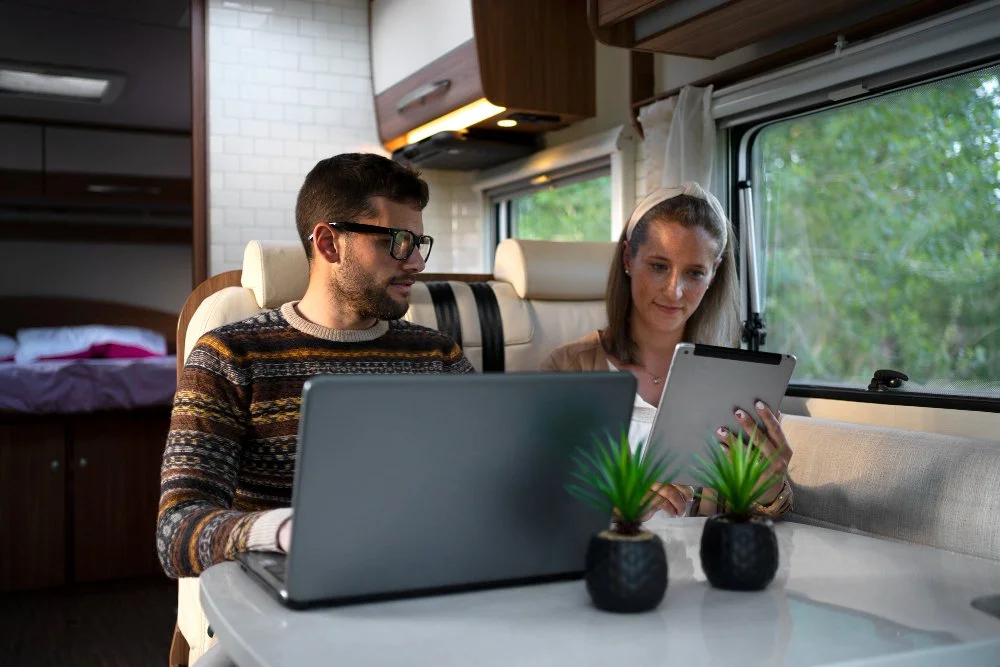Balancing Comfort and Functionality in Design: Creating Spaces That Work for You
In today’s fast-paced world, designing spaces that are both comfortable and functional has become a priority for many. Whether you’re designing your home, office, or even a van, achieving the right balance between these two elements ensures the space serves both your emotional and practical needs. Comfort is key to feeling relaxed and at ease, while functionality ensures the space supports your daily activities and workflow. The challenge, however, is finding that perfect balance. In this blog, we’ll explore why combining comfort with functionality matters and how to get it just right.
Why Comfort and Functionality Matter
When designing any space, it’s important to recognize that comfort and functionality are not mutually exclusive—they should coexist in harmony to create a space that supports both your lifestyle and your well-being. Whether you are designing a living room, a home office, or a custom van conversion, both elements should be integral to the design process.
Comfort
Comfort goes beyond just physical relaxation—it also encompasses emotional well-being. A comfortable space is one that feels inviting, soothing, and safe. It encourages relaxation and productivity, promotes better health, and enhances the quality of your day-to-day life. A space that prioritizes comfort allows you to unwind after a long day, recharge your energy, and feel at ease when performing everyday tasks.
Functionality
Functionality ensures that a space works for you, not against you. It’s about creating an environment where you can effortlessly perform tasks, from cooking a meal to managing your work responsibilities or relaxing in front of a TV. Functionality is achieved through smart design choices that optimize space, provide easy access to essentials, and reduce clutter. Functionality ensures that the layout, furniture, and storage solutions serve the needs of the people using the space.
The Emotional and Practical Impact
Ultimately, comfort and functionality work together to create a sense of balance. A well-designed space should make you feel at home while allowing you to achieve your goals. Whether it’s a living room where you unwind after a long day or a kitchen where you prepare meals for your family, the space should cater to both your emotional needs and practical requirements.
How to Achieve the Perfect Balance
Designing a space that strikes the right balance between comfort and functionality involves thoughtful consideration of your lifestyle, needs, and personal preferences. When designing, always start by evaluating your requirements—what are the most important aspects of the space, and what will make it work for you in terms of comfort and usability? Here are several strategies to help you achieve the perfect balance:
Choose Multi-Functional Furniture
Investing in multi-functional furniture can greatly enhance the comfort and functionality of any space. Multi-functional pieces serve more than one purpose, which not only makes them practical but also contributes to a clutter-free, organized environment. Consider furniture such as sofa beds, extendable dining tables, or ottomans with built-in storage. These pieces work well in smaller spaces and help optimize your layout while keeping the space cozy.
Sofa beds or futons for seating and sleeping
Storage benches or ottomans for extra storage
Modular shelving systems that can be customized to fit your needs
Maximize Natural Light
Natural light plays a vital role in making a space feel comfortable and open. When light floods a room, it helps create a positive, welcoming atmosphere. Not only does natural light improve the aesthetic appeal of a room, but it also has practical benefits—it can reduce the need for artificial lighting, making the space more energy-efficient. It’s essential to place furniture in such a way that maximizes access to natural light, such as positioning desks near windows or placing mirrors to reflect light throughout the room.
Use sheer curtains or blinds that let in more light while still offering privacy
Place work areas, such as desks, near windows to promote natural light
Consider skylights or larger windows for spaces where sunlight is scarce
Invest in Quality Materials
When designing for both comfort and functionality, quality materials are crucial. High-quality materials such as soft textiles for furniture, sturdy woods for shelves or cabinets, and durable flooring options ensure longevity and durability while contributing to the comfort of the space. Comfort is not just about plush seating—it also includes tactile elements like textures, finishes, and materials that enhance your experience. Opting for quality materials is an investment that pays off in terms of both aesthetic appeal and long-term practicality.
Soft, breathable fabrics such as linen, cotton, or velvet for upholstery
Durable hardwood or engineered wood for furniture and flooring
Non-slip rugs or mats for added comfort in high-traffic areas
Declutter and Optimize Storage
Clutter can detract from both the functionality and comfort of a space. A disorganized room is stressful and can make it hard to relax or concentrate. By incorporating smart storage solutions, you can maximize the functionality of a space while also creating an atmosphere of calm. Clever storage options, such as hidden compartments, built-in shelves, and wall-mounted units, allow you to store items out of sight while keeping the space tidy and visually appealing.
Use vertical storage solutions like wall-mounted shelves and cabinets
Incorporate hidden storage beneath furniture, such as under-bed storage
Invest in multi-purpose furniture with built-in storage
Turning Your Design Vision into Reality
At this stage of the design process, you’ve learned the importance of balancing comfort and functionality. Now it’s time to make your vision a reality. Whether you’re working with a professional designer or taking the DIY route, the key is to focus on a few key principles that will bring everything together seamlessly.
Design with Flexibility
When designing for both comfort and functionality, flexibility should be your priority. Spaces that allow for customization and adaptability tend to stand the test of time. Consider designing spaces that can evolve with your needs—whether it’s adjusting the layout of your living room as your family grows or reconfiguring a home office to accommodate different tasks. Modular designs are an excellent choice for this, as they can be easily rearranged or upgraded as your needs change.
Choose modular furniture that can be reconfigured
Create flexible spaces that can serve multiple functions (e.g., a guest room that doubles as a home office)
Use removable or adjustable elements like shelves, curtains, and partitions
Prioritize Ergonomics
It’s not just about how it looks, it’s about how it feels to use. Ergonomics is key to making a space comfortable and functional. Whether it’s the height of your desk, the angle of your chair or the layout of your kitchen, making ergonomic choices will make you more comfortable and more productive. For example ergonomic office chairs and desks will help your posture and reduce strain so your workspace is comfortable for hours.
When it comes to van life ergonomics play a big role. And that’s where the Cost-Effectiveness of Custom Builds vs Pre-Built Vans comes in. Custom builds allow you to tailor the layout to your specific ergonomic needs, to make it both comfortable and functional, while pre-built vans may require compromises in space and design. Custom vans are designed around how you will use the space so you get a higher level of comfort and efficiency. While the initial investment in a custom build may be higher, the long term benefits – better ergonomics, personalized features and a van that fits your lifestyle – can make it cost effective in the end.
Select ergonomically designed chairs and desks
Ensure that workstations are at the correct height for comfortable use
Pay attention to lighting placement to reduce eye strain
Personalize the Space
One of the best ways to make a space comfortable is to infuse it with your personal style. Customizing your space with items that reflect your personality will make the environment feel more inviting and warm. Whether it’s through artwork, color schemes, or unique décor, personalization adds a layer of comfort that can’t be achieved with generic design elements.
Add personal touches with custom artwork, family photos, or travel souvenirs
Use colors that evoke feelings of calm and relaxation (e.g., soft blues or earthy tones)
Layer different textures for a cozy, lived-in feel (e.g., throw blankets, cushions, rugs)
Creating a Space That Works for You
Comfort and function is the key to good design. Whether you’re designing a home, office or van, get this balance right and you’ll have a space that nourishes your emotional well being and meets your practical needs. With thoughtful planning and quality materials, flexibility and personalization you can have a space that works for you and makes every day a little more enjoyable. Ultimately a well balanced design should reflect your lifestyle and feel easy, efficient and comfortable. Mango Vans specialise in custom van conversions that focus on this balance so your van is as comfortable and functional as it is cool. Whether you’re going on a weekend escape or living life on your terms, Mango Vans can help you have a van that works for you.
Ready to create the perfect van design that’s both functional and comfortable? Contact Mango Vans today to start your custom van conversion journey and bring your vision to life.

